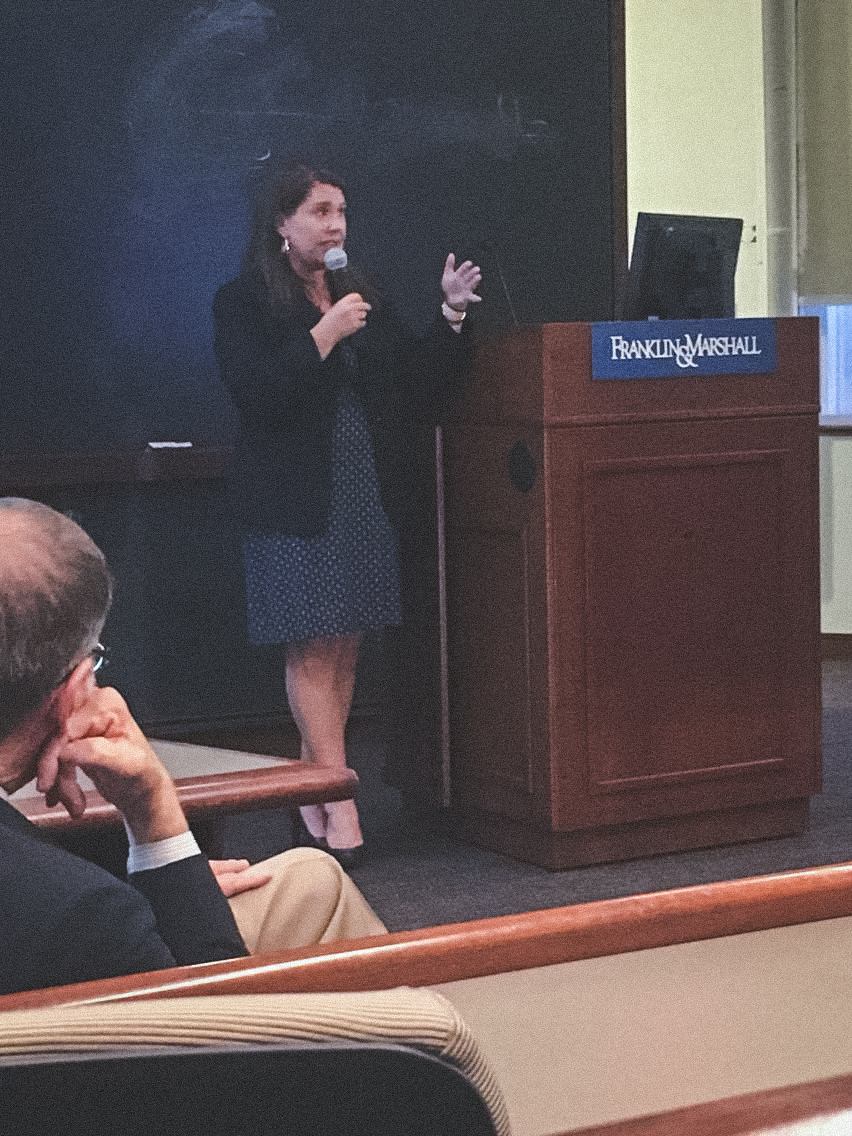By Sarah Frazer || Staff Writer
The United States of America ranks 95th in the world for women represented in government. Only 20% of Congress is female, and the numbers get more disappointing when one looks at the percentage of governors, 12%, and state legislators who are women. According to Jennifer Lawless, there is no structural reason women are less successful when running for positions in government, contrary to popular belief. Why, then, is the U.S. still so embarrassingly behind when it comes to having women in government?
This week the Government and Women, Gender, and Sexuality departments hosted Jennifer Lawless, an acclaimed professor and political scientist, to speak on the topic of women in politics and, specifically, the obstacles they face. She addressed the question of what biases, if any, do women face when running for political office in the United States; this question is also the central topic of her new book, Women on the Run: Gender, Media, and Political Campaigns in a Polarized Era. This work, along with other books of hers, has been used in Government classes here at F&M.
To answer the question posed in her presentation and her book, Lawless studied U.S. House elections for the years 2010 and 2014 and analyzed how female candidates fared compared to their male counterparts. Her research was based on local reporting of each House race, as well as interviews with voters and campaign strategists. Her reason for using data from these particular elections has to do with the nature of the elections. They are campaigns for the House of Representatives, meaning they are not as publicized as, say, presidential or even gubernatorial races, but they are still relatively high profile elections. Lawless studied midterm elections, those without a presidential nominee at the top of the ballot, so that a voter’s pick for House Representative would not be skewed by his choice for president.
The results of Lawless’ research will be surprising to most Americans, as they go against the conventional wisdom about gender discrimination in politics. In fact, Lawless found that women running for office win at the same rate that men do. Moreover, they are able to raise money at equal rates and the media reports on them in the same way it does men.
Lawless explained the gender equal conditions of elections by citing the increase in party polarization of the electorate and the lack of novelty of female candidates. She argues that the vast majority of people vote based on party identification, no matter who the particular candidate of the party is. And since women participate in politics, even if they are underrepresented, a female candidate is no longer newsworthy. This point, however, may not apply to the presidential election, where a female major party nominee still is unprecedented. Another reason the media reports on men and women equally is the lack of coverage House races receive, in general.
With their limited room, journalists do not want to waste space reporting much else besides candidates positions on issues. Thus, while 60% of Americans think that the media focuses too much on women’s appearances and some 50% say that women need to be more qualified to receive the same position as a man, women do not actually face sexism in the voting booth.

Lawless’ findings have a number of important implications for the future of women in politics and government. If women are not discriminated against in elections, there must be some other reason there are so many fewer women in government. According to Lawless’ research, not as many women hold political offices because women are significantly less likely to run for office. The reason this is the case is because they perceive that it will be much harder for them to win, and campaign recruiters assume the same thing. The commonly held belief that women have to work twice as hard to get half as far deters many potential candidates. Women also tend to have more familial and household responsibilities, meaning that running for office is much more complicated for them. They may delay running, if they run at all. Women on average hold politicians and elected officials to a higher standard, so that they are less likely than men to think themselves qualified to hold office. On the other hand, even men who self assess themselves as being unqualified for office will often run.
Lawless’ experience running in a House race herself informed her presentation and research, as a whole. One particularly useful insight she shared is that female candidates can distort the reality of a woman running for Congress by telling people all the times they faced sexism, even if those times are few. As Lawless admitted, she can only remember five, yet she has told them to other women, who may have been deterred from running in the future.
Lawless proposed a solution to the problem of women being underrepresented in government. She determined we first need to correct the false assumptions about sexism in campaigns and elections, of which there is actually quite little. Next, we need to start instilling in women earlier, at the high school and college levels, an interest in politics and a desire to hold those offices. Only then, will we have gender equality in our national legislature and elsewhere.
Sophomore Sarah Frazer is a staff writer. Her email is sfrazer@fandm.edu.
Photo by Brielle Stander